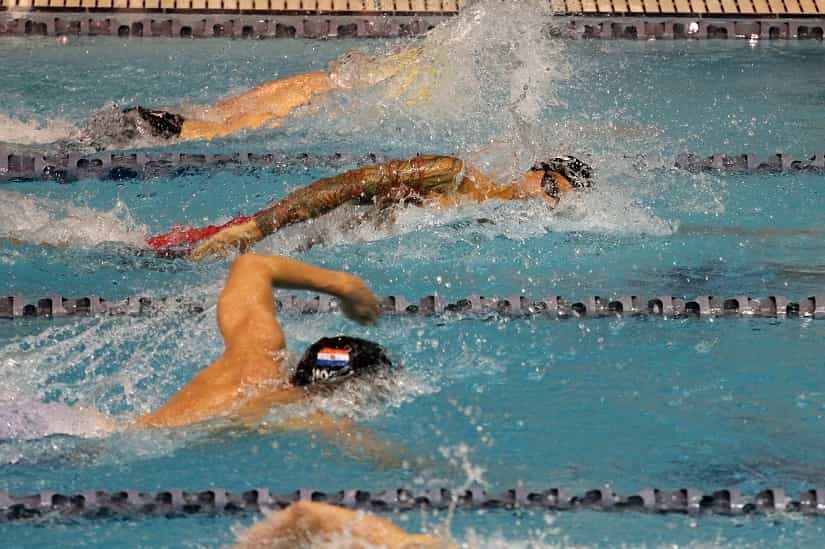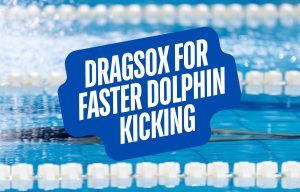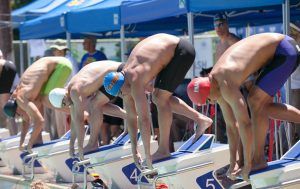Fast kickers have flexible ankles. Here is a simple mobility drill to help you loosen up your ankles and kick your way to faster swimming.
Swimmers spend a lot of time worrying about being flexible. This means mobility work before they jump into the water, after engaging in a round of strength training exercises in the gym, and stretching sessions after swim practice to stay limber.
But while most of the attention is paid to mobility work to avoid swimmer’s shoulder–and rightfully so–lost in the stretching mix is working on our ankle flexibility.
Here is more on why ankle flexibility is crucial for fast swimming and some stretches to help open up your ankles.
Let’s dive in.
Why Does Ankle Flexibility Matter?
The more flexible your ankle, the more surface area you can direct onto the top of your foot.
Flexible ankles push more water backward instead of kicking it down, or in the case of swimmers with very inflexible ankles, simply creating drag.
In the same way that great swimmers have a high, early vertical forearm, great kickers have an early vertical ankle in their kick.
You should already know what a powerful kick can do for your performance.
You saw for yourself what Michael Phelps and his underwater dolphin kick did during the 4×100 freestyle relay in Rio (he decimated everyone off the wall, in case you missed it).
Alexander Popov, one of the greatest sprint freestylers in history, could kick a 50m in 27 seconds…long course.
A strong kick goes beyond being able to kick fast, of course.
A strong kick gives you better body positioning and creates lift from the downkick that keeps your body riding high in the water. Perhaps most noticeably, when you have conditioned legs, your stroke falls apart much less at the end of your races.
Much like shoulder and back mobility is essential for an efficient and full range of motion in your pulling motion, ankle flexibility is essential for your kick.
A study of 10 NCAA Division 1 female swimmers found that ankle flexibility correlated positively with kicking speed, while vertical jump power and even body size had little significance on kicking speed.
There are a few different ways that you can unlock your ankles:
- Do more kick. Performing more time on your kickboard in the pool gives you the most bang for your buck—you get conditioning work in with your legs, while also loosening your ankles by performing the movement over and over again.
- Add fins. Everybody loves using swim fins, and with good reason—you get to go really, really fast! The added length and range of motion also stretches out your feet and ankles, making it a dynamic stretching movement. Backstroke kicking, in particular, tends to flex the ankles.
- Mobility work. For swimmers with poor ankle flexibility, mobility work is in order. There are rockers (where you sit on your ankles and lean back) and simple ankle rotations.
Dryland Tip: How to Improve Your Ankle Flexibility
Jason Dierking, the strength and conditioning coach for the University of Louisville Swimming program, has a simple mobility exercise that you can use to increase ankle flexibility while also hitting the big cables running down the back of your legs–your hamstrings.
“I like to add an ankle mobility component into a basic dynamic hamstring stretch we do by including an angled board,” he says. “The stretch is similar to a ragdoll pose used in yoga. However we’ll go for reps following the pace of the breath (exhale down, inhale up).”
Demonstrated below is the stretch. Dierking has his athletes use “The BOB” (an angled platform).
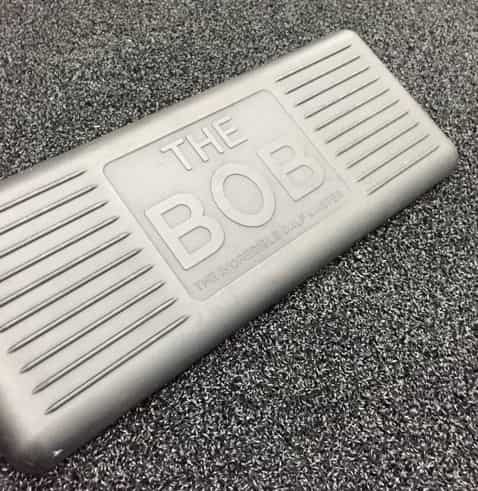
If you don’t have access to one you can stack a couple kickboards and place your heels or balls of your feet on the edge of the boards.
“You can increase the mobility around the ankle dramatically in both directions by putting your toes up and down while performing this stretch,” adds Dierking.
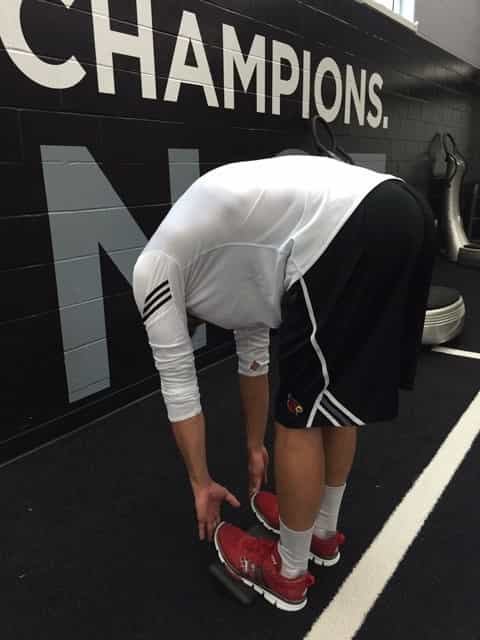
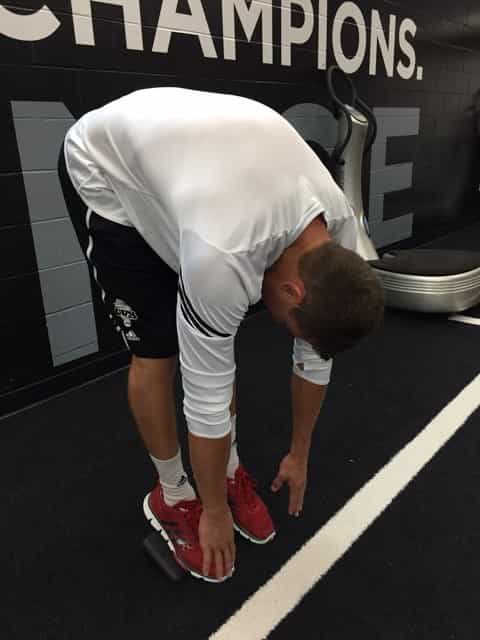
Wrapping Things Up
Swimmers are always looking for ways to optimize movement and performance in the water.
Whether it’s adding core exercises to improve body position in the water or mobility exercises to squeeze every last bit of distance from each stroke.
Working on ankle mobility and adding it to your swim-specific dryland program can increase range of motion in the kick, helping you kick faster and more efficiently.
Try using these ankle stretches in the weeks and months ahead, and kick your way to more flexible ankles.
A big thanks to Jason for stopping by and sharing this dryland tip with us. He is the assistant director of sports performance at the University of Louisville, where he works with the men’s and women’s swim teams. You can catch up with Jason on Twitter here.
More Stuff Like This:
- Why Swimmers Should Jump Rope. Ankle flexion is important, and so is ankle strength. Here is a low-impact way to build ankle strength while also developing some white-hot, fast-twitch awesomeness in your legs.
- Does Dryland Improve Sprint Swimming Performance? We cover some research on whether sprint performance improved with various types of resistance training.
Image credit: Kirk Nelson

